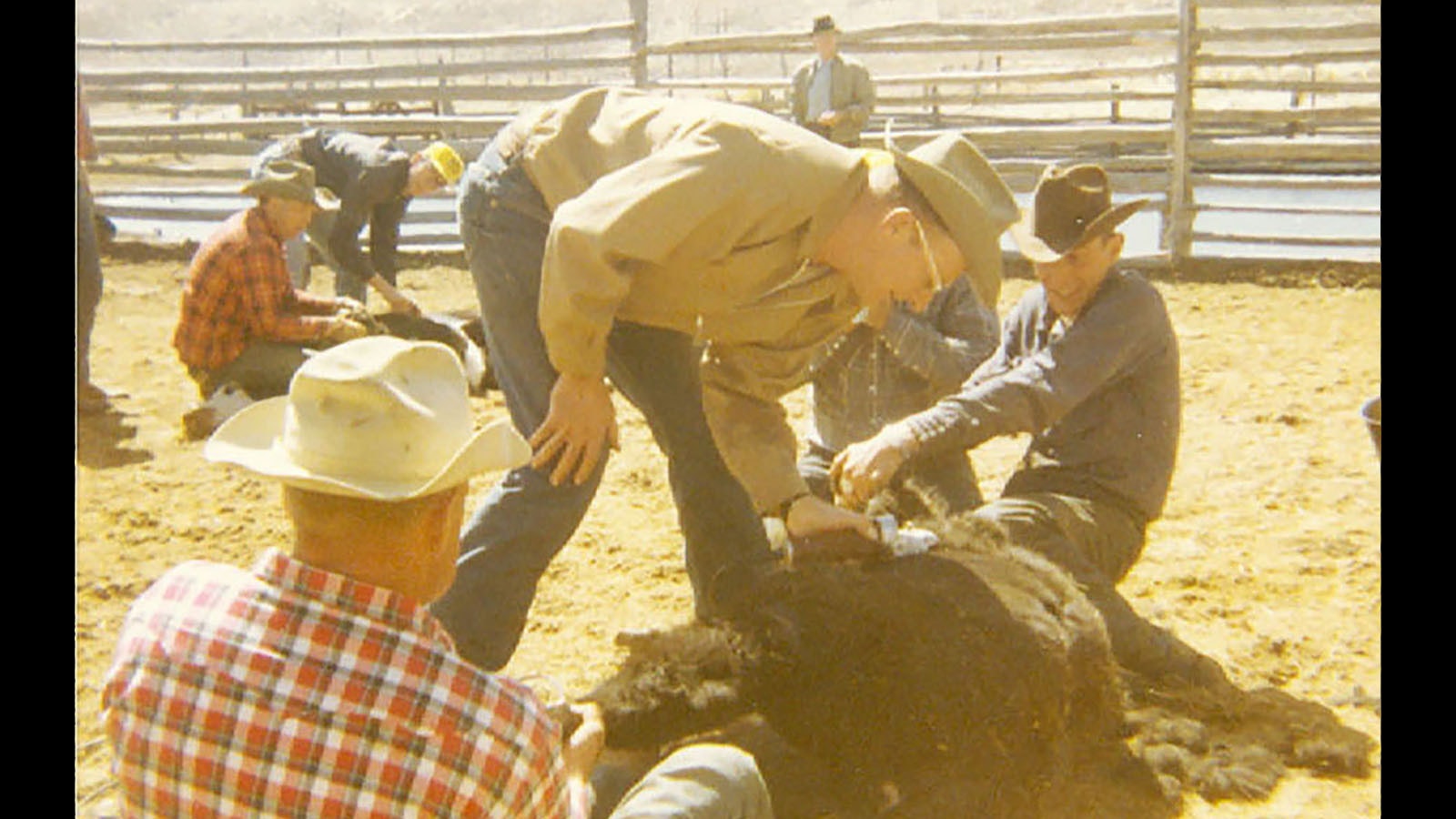Frank Miller only rode for one brand his life, the I Lazy D, and in 55 years he rode a lot of horses to move cattle and sheep, but one of his favorite mounts was Moody River.
In 1873, Isaac Miller entered the livestock business, establishing a ranch northeast of Rawlins. This ranch would become known as Miller Estate Co.
Joel Hurt, a partner of Isaac Miller, registered the I Lazy D brand in 1876 and the ranch Miller operated would continue to use that brand for well over a century.
The ranch ultimately encompassed around 160,000 acres of federal, state and private land, and was managed and worked by four generations of the Miller family, including Isaac, his son Kirk, grandson Frank and great-grandsons Mark and Rod. In addition, other family members had a hand in the operation including Mark and Rod’s cousin Bill Shaffer. Rod's oldest son, Tommy, and Mark’s son Josh did childhood chores on the ranch. But as Mark recalls, when the ranch sold, “They weren't cow hands yet.”
Frank Miller, the third generation, began riding for his father in 1924 when he was just 5 years old. He would continue riding for the ranch for 55 years. He was inducted into the Wyoming Cowboy Hall of Fame in 2022.
A Compassionate Rancher
Frank left the ranch to serve with the U.S. Army Air Force in the jungles of New Guinea during World War II, and he spent the harsh winter of 1949 running a feed store in Rawlins. But every other period of his youth and adult working life involved riding for and managing the I Lazy D.
When Frank was an adolescent, only one fence crossed the ranch, primarily dividing summer and winter range for the sheep and cattle. But when he began managing the ranch, he built interior fences through the years that split the range into over a dozen well-managed pastures and allowed rest rotation grazing in the spring. He also had more than 30 windmills built in strategic places to allow the livestock greater dispersal and mobility to grazing areas in each pasture.
Throughout this time, he developed a keen ability to manage sheep, cattle and horses, always moving in a calm manner so livestock could pick their way through any obstacle. The ranch kept a remuda of 45 horses, and Frank knew each one.
Frank’s treatment of sheep and cattle was equally compassionate. In the fall, he evaluated the cattle herd determining which animals to keep and which to ship. His manner with sheep exemplified his talents at animal husbandry, coordinating shearing crews to finish their job after the worst spring storms, if possible, and raising the lambs in the best spring pastures of the western Hanna Basin.
An ambassador of the Wyoming range livestock industry, he constantly worked with scientists from the University of Wyoming to study the dietary relationship between pronghorn and sheep, the nature of rattlesnake migrations, the archaeology of the region, paleontology along the North Platte River, geology of the region and other subjects.
One of his greatest accomplishments was insisting on scientific verification of the federal government’s Soil and Vegetation Inventory Method of the early 1980s where attempts were planned to adjust livestock grazing numbers. His success earned him and his family recognition as Rancher of the Year in Carbon County for 1983.
In 1984, he and his family were awarded the Wyoming Section of the Society for Range Management’s Excellence in Grazing Management.
The ranch sold the sheep herd in 1973 after a hard spring storm and excessive predator loss. Subsequently, the ranch increased the cattle herd to 1,200 cow/calf pairs with a Hereford/Angus cross.
Frank liked the simple things in life: family, kindness and hard work. He once told his son Mark that after retirement, the thing he missed the most from ranching was “seeing the cattle graze in the thick meadow grass in spring and listening to them belch.”
Other Featured Wyoming Cowboy Hall of Famers:
Wyoming Cowboy Hall Of Fame: Kent Snidecor’s Not A Rancher, He’s A Cowboy
Wyoming Cowboy Hall of Fame: Veteran Legacy & New Exhibit At Wyoming Veterans Memorial Museum
Wyoming Cowboy Hall of Fame: Mickey and Bill Thoman, a Cowboy Couple
Wyoming Cowboy Hall of Fame: A Hamilton Cowboy Legacy
Wyoming Cowboy Hall of Fame: Mary Flitner – My Ranch, Too
Wyoming Cowboy Hall of Fame: Marion Scott, Campbell County Cowboy
Wyoming Cowboy Hall of Fame: Pat Dew
Wyoming Cowboy Hall of Fame: Marie Jordan Bell -- Iron Mountain Cowgirl Who Earned Her Spurs
Wyoming Cowboy Hall of Fame: Bill Francis, Cowboying in Jackson Hole
Wyoming Cowboy Hall of Fame: Stepp Family Forges Way For Black Cowboys
Wyoming Cowboy Hall Of Fame: From Brush Creek to Buffalo Bill’s Wild West
Wyoming Cowboy Hall of Fame Saddles Up with Cowboy State Daily
34-Years Ago Sunday, Lane Frost Died At Cheyenne Frontier Days, Cowboys Remember









